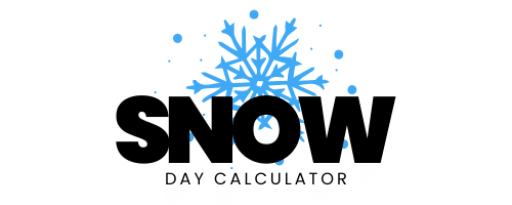Snow Day Articles and Resources: Your Complete Guide
When winter weather threatens and schools face closure decisions, families need trustworthy information fast. Snow days create excitement for students but require planning for parents and educators alike.
This comprehensive resource hub of Snow Day Articles and Resources brings together everything you need to navigate snow day scenarios. From accurate predictions and school closure updates to weather guides and safety tips, you’ll find expert insights and practical advice all in one place. Along with our Snow Day Calculator, explore these helpful guides to stay prepared throughout the winter weather season.
Whether you are checking tomorrow’s forecast or learning about snow day superstitions, or exploring our library of Snow Day Articles and Resources, these articles provide the knowledge and tools to make informed decisions when winter storms approach.
Predictions
Understanding snow day forecasting involves complex meteorological analysis and local decision-making factors. Our Snow Day Articles and Resources on predictions explore accuracy, seasonal updates, and how forecasters determine tomorrow’s likelihood of school closures.
Latest Prediction Articles:
- How Accurate Are Snow Day Predictions? A 2024 Analysis
- Regional Weather Patterns That Trigger School Closures
- Winter Storm Forecasting: What Meteorologists Consider
→ Explore all Predictions
School Closings
School districts follow specific protocols when deciding whether to close due to winter weather. These resources examine closure policies, communication systems, and the factors superintendents weigh when making these critical decisions.
Latest School Closing Articles:
- How School Districts Decide on Snow Day Closures
- Emergency Communication Systems: Getting Closure Alerts
- Rural vs Urban Snow Day Policies: Key Differences
→ Explore all School Closings
Weather Guides
Snow day calculators and weather apps serve different purposes in winter planning. For real-time forecasts, you can also explore resources like OpenWeatherMap. These guides explain snowfall prediction methods, accumulation measurements, and how various weather factors combine to create closure conditions.
Latest Weather Guide Articles:
- Understanding Snowfall Accumulation Predictions
- Wind Chill vs Snow Depth: What Matters for Closures
- Reading Weather Maps for Snow Day Potential
→ Explore all Weather Guides
Fun Fact: Did you know that how many times as much snow falls annually in New Hampshire as in Utah? New Hampshire typically gets much more snow, making it one of the snowiest states in the U.S.
Tips & Safety
Snow days offer opportunities for family activities while requiring safety awareness during winter storms. These articles provide practical advice for parents, students, and families navigating unexpected closures and severe weather conditions.
Latest Tips & Safety Articles:
- Indoor Activities to Keep Kids Engaged on Snow Days
- Winter Storm Safety: Protecting Your Family
- Snow Day Meal Planning for Unexpected Closures
→ Explore all Tips
Stay Prepared with Accurate Predictions
Winter weather can change quickly, making reliable forecasting tools essential for families and schools. These resources complement real-time prediction tools by providing a deeper understanding of weather patterns, closure decisions, and safety considerations.
Want to know your chances today? Try our [Snow Day Calculator] and check predictions instantly. Combined with these expert guides, you’ll have everything needed to navigate winter weather with confidence.
Frequently Asked Questions (FAQs)
1. What are the most common reasons for school closures due to winter weather?
Schools close mainly due to heavy snowfall, icy roads, blizzards, freezing rain, and power outages. Districts also monitor wind chills and weather forecasts. If travel becomes unsafe, a snow day is declared to ensure student and staff safety.
2. Why don’t schools decide on closures the night before?
School closures aren’t usually decided the night before because winter weather changes quickly. Conditions may shift from light snow to icy roads overnight. Districts wait until early-morning forecasts, road checks, and bus inspections before making the final snow day call.
3. How do schools make the decision to close or delay classes?
Schools decide closures by reviewing weather forecasts, road safety reports, and transportation updates. Input from meteorologists, law enforcement, and bus companies also plays a role. The main goal is student safety, which often leads to a delay or full snow day closure.
4. What qualifies as a snow day?
A snow day happens when conditions make travel unsafe, such as heavy snow, icy roads, freezing rain, or extreme cold. If buses can’t operate safely or roads are hazardous, schools declare a closure to keep students and staff protected.
5. Which states get the most snow days?
Northeastern and Midwestern states experience the most snow days. New York, Michigan, Vermont, Maine, and New Hampshire often top the list. These regions see heavy annual snowfall, so families frequently use Snow Day Calculators to predict possible school closings.
6. What happens if schools exceed their allotted snow days?
If schools exceed their allotted snow days, districts schedule make-up days. These are often added to the end of the school year, during spring break, or on planned holidays. Rules vary by state, but the goal is meeting required instructional hours.
